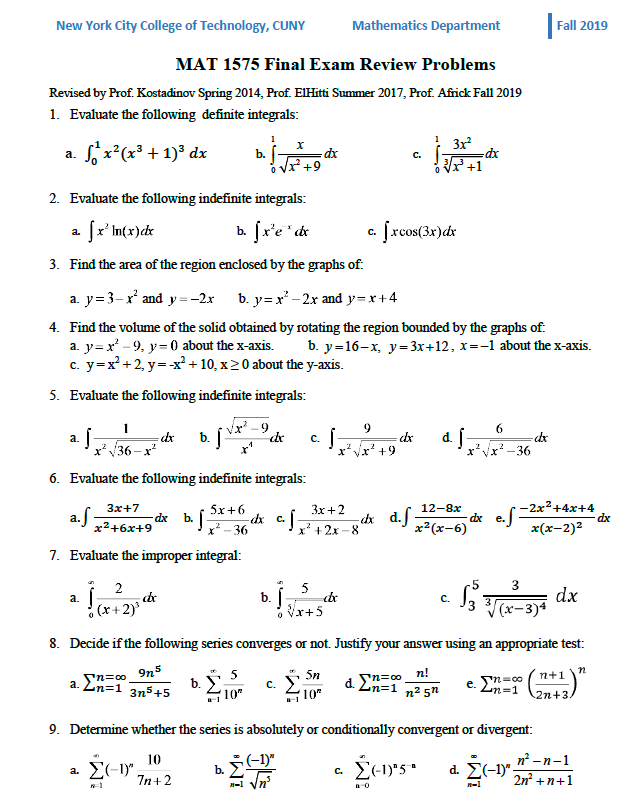As I discussed in class, our 2nd midterm exam will be Wednesday (Nov 14). See below for a list of topics and review exercises for the exam.
(The review exercises are taken from the MAT1575 Final Exam Review sheet, which is available as a pdf from Files or from the Math Department course listings page. I have included a partial screenshot below–but note that the full pdf includes the answers to the exercises, so that you can check your solutions.)
Please start working on the review exercises for this exam, and write out solutions to them. I will collect these (plus additional exercises from the Final Exam Review sheet) later in the semester as a HW assignment.


Here’s the list of exercises to review for this upcoming exam again, with some additional notes:
#1(a)(b) & #2(a)(b): integration by u-substitution and integration by parts, respectively–these topics were covered on Exam #1, so you could also consult the solutions for that exam
#3(b): area between curves–note that #3(a) was the exercise given on Quiz #3. Set up #3(b) according to the same steps. Draw a sketch of the graph of the two curves and the region enclosed.
#4(a)(c): volumes of solids of revolution. For #4(a), use the disk method. For #4(c), use the method of cylindrical shells. For each, sketch the region in the xy-plane, and attempt to sketch a representative disk/cylindrical shell before setting up and solving the definite integral for the volume.
#6(a)(b): integration by the method of partial fractions. Note that the denominator #6(a) consists of a “repeated linear factor”, whereas #6(b) is the simpler case of “distinct linear factors” (the exercise on Quiz #3 was a case of distinct linear factors)




I just realized that #2(b) on the Final Exam Review involves integration by parts “twice”, b/c of the x^2 term (i.e., you do integration by parts, but the resulting “v du” integral requires you to do integration by parts again!)
This is a good exercise to understand, but there won’t be an exercise like that on the exam. You should however be able to integrate “x*e^x” using integration by parts.